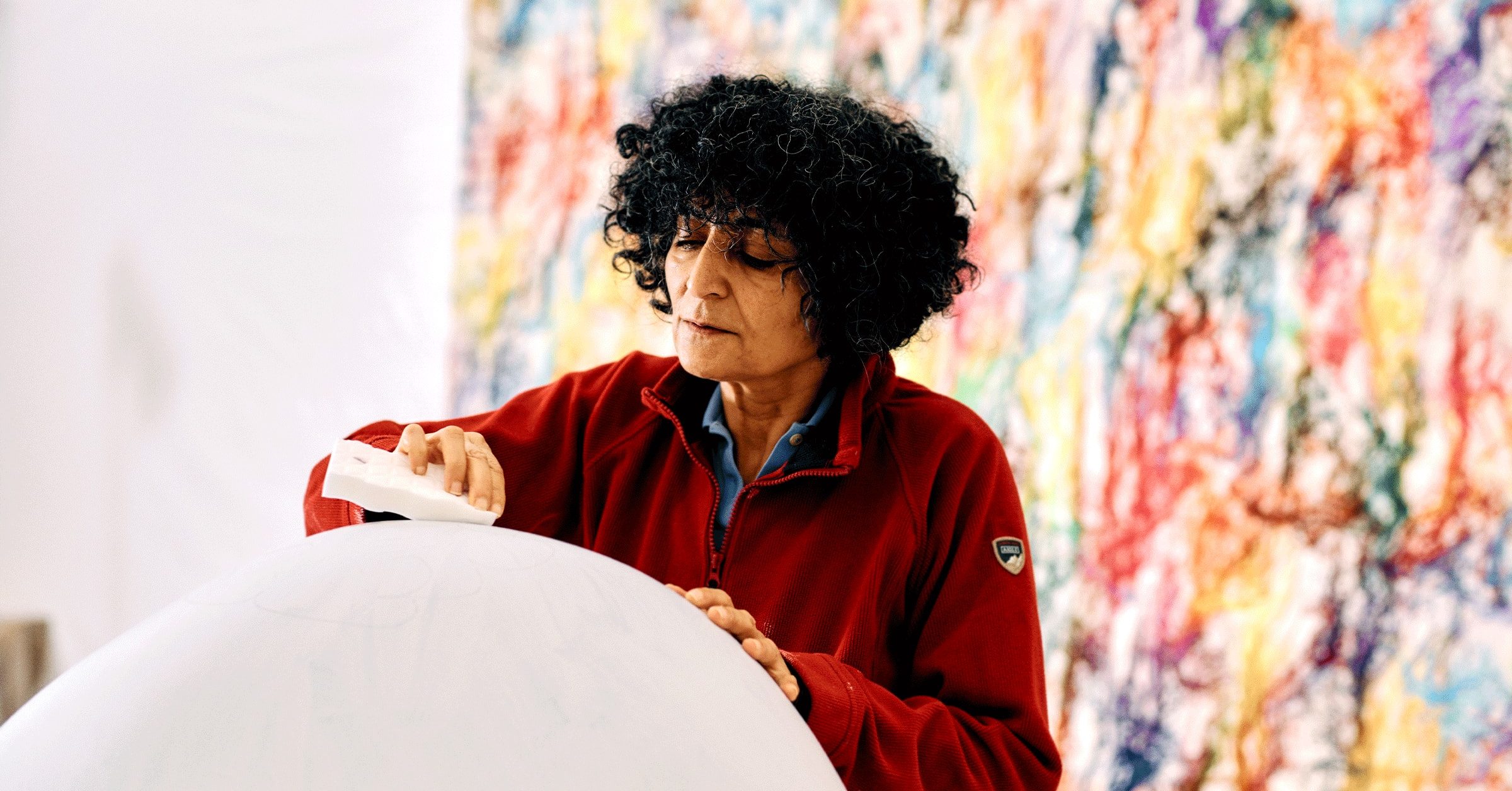In art school, Ghada Amer found out a truth that would later become the pulse of her artistic rebellion. The history of art, and especially painting, had long been told by men, for men, she discovered. The realization shaped her life’s work and inspired her to begin embroidering, using thread as her medium of painting. “I am a painter above all. Thread and needles are my brush,” Amer wrote. As a child, Amer would go with her mother to buy patterns and materials to make clothes. Her mother, a PhD holder and an engineer, liked to sew and make clothes, taught her patterning, and she taught herself how to thread. Amer, an Egyptian-American artist of international acclaim, has built a career that stretches across mediums and continents. Her practice encompasses bronze sculpture, clay ceramics, printmaking, installations, video works, and even outdoor gardens. Represented by leading galleries in New York, London, Seoul, and Cape Town, Amer’s art has found a home in both private collections and major museums worldwide. Her works are part of the permanent collections at institutions such as the Centre Pompidou in Paris, the Art Institute of Chicago,…



